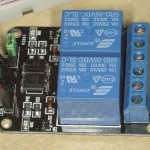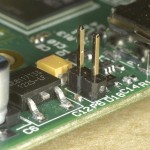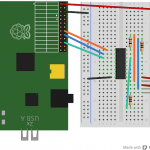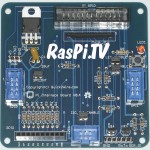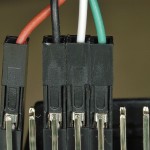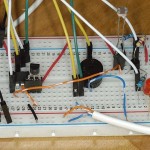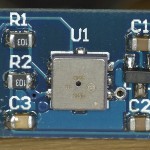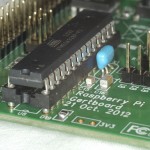
My V2 Gertboard showed up today. I promised some photos yesterday, so here they are, along with some first impressions… Main visible differences from V1 are: CE and FCC marks Different fuse holder Different motor controller chip – surface mount All ICs are soldered directly to the board apart from the ATMega, which is socketed leds are surface mount there are pull-up resistors on the buffers the buttons are surface mount the DAC chip is teeny weeny and surface mount the regulator is surface mount The jumpers with grippy extension are very practical But the […more…]
